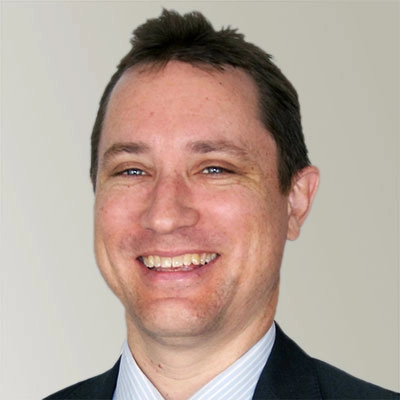Rising living costs hit SMSFs
A return to normality brings with it an increase in the cost of enjoying a ‘comfortable’ retirement, writes Anthony Fensom.
The cost of retirement is on the rise as Australia emerges from its pandemic-induced downturn, with entertainment and transport costs leading the charge. How should self-managed super fund (SMSF) trustees respond?
The latest data shows a return to “normality” and with it the increasing cost of enjoying a “comfortable” retirement, according to the Association of Superannuation Funds of Australia (ASFA).
Couples aged around 65 seeking a comfortable retirement required $62,828 per year and singles $44,412 in the March quarter 2021, both up 0.4 per cent on the previous quarter, the peak policy group said in its 20 May release.
For those with more “modest” budgets, the ASFA estimated the annual requirement for those aged around 65 as $40,829 for couples and $28,254 for singles.
However, retirement budgets for those aged around 85 were up by just 0.1 per cent, reflecting different expenditure patterns, such as car ownership.
A comfortable annual budget in this age group was estimated at $58,930 for couples and $42,470 for singles, with a more modest budget at $38,382 and $26,827, respectively.
Among the price rises, petrol prices climbed a substantial 8.7 per cent, with food prices up 0.4 per cent, restaurant meals up 0.5 per cent and alcohol rising by 1 per cent, with telecommunications charges up 0.4 per cent.
Health insurance premiums also rose in October 2020 by around 3 per cent for many retirees, affecting the 2.2 million Australians aged over 65 with private health insurance.
“We saw a return to more normal conditions in the March quarter,” said ASFA’s deputy CEO, Glen McCrea. “In the previous few quarters there were suspensions or delays in certain price increases, but now price increases are returning to a more standard pattern.”
The ASFA’s “Retirement Standard” considers a modest retirement lifestyle as “better than the age pension, but still only able to afford fairly basic activities.”
In contrast, a comfortable retirement entails “a broad range of leisure and recreational activities” including having “private health insurance, a reasonable car, good clothes, a range of electronic equipment and domestic and occasionally international holiday travel.”
Both budgets assume that retirees own their own home outright and are relatively healthy.
‘Take some profits off the table’
Commenting on the data, SMSF specialist adviser, Liam Shorte said it highlighted the need for trustees to prepare for a rainy day of increased spending.
“It’s funny but many SMSF members have a surplus of cash this year as they did not get to do any travel during the COVID-19 pandemic and so have built up a little extra cash reserve. That may not last long if and when the seas and skies open up again,” said Shorte, director at Verante Financial Planning.
“In the current low interest rate environment there are often times when SMSF trustees face a shortfall in the interest, rent and dividend income of a fund fully meeting the income needs of the members. Trustees need to really understand that they can also use some capital growth in pension phase as another source of income.
“It’s engrained in many investors not to sell because of the capital gains tax, but the beauty of an SMSF in pension phase is that earnings, including capital gains, are usually tax exempt. So trustees can look to sell some investments to fund lifestyle without worrying about tax.
“This has become especially relevant as SMSF trustees have moved into international investing over the last decade or more. You just do not get the same levels of dividends from overseas markets, but what we have seen is better capital returns than Australian investments.
“SMSF members need to understand that taking some of those profits off the table is not necessarily a bad thing and in fact should plan to do so regularly to harvest income for their lifestyle.”
He adds: “They also need to review their cash and fixed interest options. In a low interest era, you cannot afford to hold large balances in cash accounts or term deposits with the big four banks paying 0.2 per cent to 0.4 per cent.
“With a little effort or using one of the new term deposit or cash platform facilities they can access better rates in the range of 0.75 per cent to 1.35 per cent much more easily from mid-tier financial institutions and still have the Government Deposit Guarantee.”
However, he advises caution in seeking higher yield investments.
“Care should always be taken in chasing higher yields, so if it sounds too good to be true then it is usually carrying much more risk than a simple term deposit or cash management account,” he said.
“Always seek a second opinion on offers or products that you are unsure about—a glossy brochure or website offers no security nowadays. Simple and considered diversification can help avoid major mistakes by putting too much into a losing strategy.”
The ATO’s latest report for the March quarter 2021 estimated total SMSF assets at slightly over $787 billion, with top assets comprising listed shares (26 per cent) followed by cash and term deposits (19 per cent). Property (both residential and non-residential) accounted for 16 per cent, with just 1 per cent held in overseas shares.
Morningstar’s head of equities research, Peter Warnes, has warned that the “global king tide of liquidity is on the ebb,” with rising inflation having the potential to trigger a “pull-back” in global markets.
As the new financial year approaches, it could be timely for SMSFs to review the asset mix to ensure genuine diversification, as well as guarding against potential shocks ahead as the inflation bugbear rears its head.


